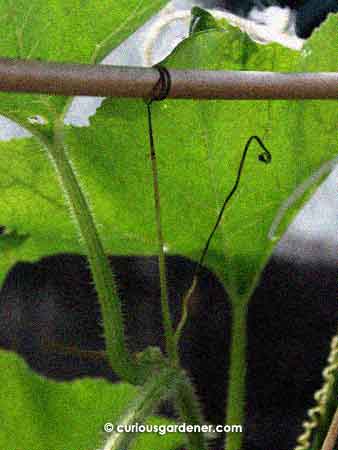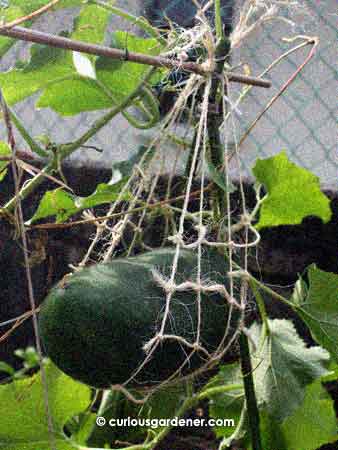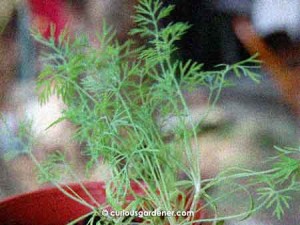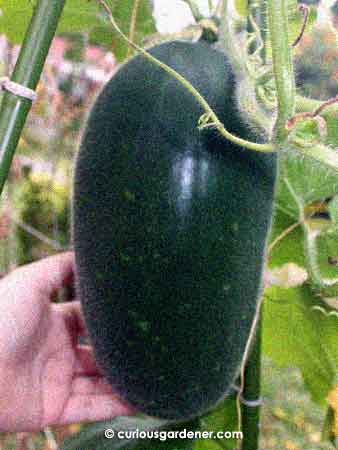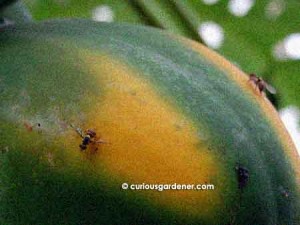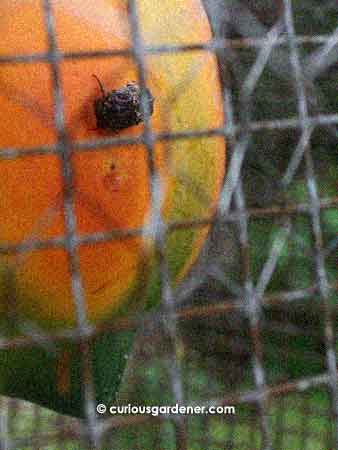We were looking at the growing winter melon fruit – affectionately known as the little monster because of the way it’s growing so rapidly – when we noticed how much the vine had drooped from the weight of the fruit. I checked more closely and saw that the last tendril holding that part of the vine up was starting to dry up. That caused a surge of panic, because the fruit is over 1.5 metres up, and if the vine gave way and the fruit dropped, it could go Humpty Dumpty’s way.
A quick search for some netting to hold up the fruit came up empty. Since it was the extra long Chinese New Year weekend here in Singapore, my options of buying something to help were severely limited. It’s a good thing I wasn’t inclined to go and buy when I couldn’t recycle. Nope, I dusted off my DIY brain cells and decided that I would make my own netting…
It’s a good thing I recently got a new ball of string for my climbing plants. This string has been my latest material of choice for providing climbing areas for my tendril-endowed plants. It’s stronger than twine but looks like it, so I still get the rustic look that I like.
I had to guesstimate the size of the net, and started out with one set of vertical strings that I envisioned would be the length of my net. After that, it was a matter of tying horizontal strings. It wasn’t a perfectly proportioned grid, but it would do.
Then, it came to the question of how to put the net, winter melon and trellis together. I know I should have considered that from the beginning, but I like improvising as I go along – an organic approach, if you would…
The winter melon has been developing at the apex of one end of the A-frame trellis. Seeing the two crossed bars gave me the idea to make the net into a hammock. It was a simple matter of knotting the loose ends together, then hooking the ends over the two bars. Now that I had the nice loop of netting, I had to maneuver the winter melon into a new horizontal position. That took some doing because the melon is quite hefty and covered in short, stiff fuzz. It looks cute but some of those bristles could still be felt embedded in the skin for a couple of hours after handling the fruit!
So, the First Fruit is now hanging placidly in its cradle, and the vine isn’t stressed to breaking point any more. As long as the trellis doesn’t keel over, everything should be just fine…
© 2012 curiousgardener.com All rights reserved.

